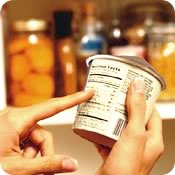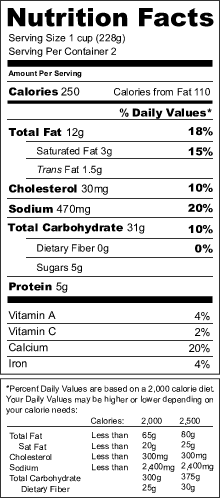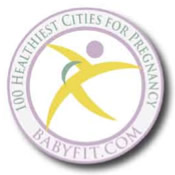
You know that, as a mother to be, it is actually healthy to gain around 25-35 pounds before you deliver your baby. So you head to the grocery store and scour the aisles for the good stuff, the healthy food that will satisfy your tastes and nourish your body, as well as your baby's. What do you look for when you're checking out the nutrition facts on that macaroni and cheese box? Whether you're one to zoom in on total calories or total carbs, you might be missing the real picture. Nutrition facts should be a part of your decision in what to eat or even what to buy. But interpreting the facts requires a bit of know-how, so make sure you aren't misleading yourself.
Understand the Power of "Serving Size"
The most important rule is to know your serving size and the number of servings in the package or can. If the labels says "one cup" for serving size and "two servings per container," that means there are two cups in the whole package. If you know you'll eat the whole package by yourself, you are going to consume two cups (1 cup x 2 servings/container = 2 cups). That means that you must double all the nutrition facts measurements to know your total intake of each nutrient - the good and the bad. Using the mac and cheese example, eating the whole package means you will have consumed 500 calories, 220 of which are from fat. You will have consumed 24 g of fat, of which 6 g is saturated fat. That's not exactly a balanced meal to fuel yourself for the day.
The only time you can avoid doing the math is when you eat the exact serving size that is listed. Always compare the listed serving size to how much food you think you'll eat and compute calories from there. 
Crack the Code in "Percent Daily Value"
Confused by what all those percents really mean? The percents refer to "percent daily value" and they're a bit trickier to interpret. The FDA bases these percents on a 2000-calorie-a-day diet. Only problem is that your caloric needs increase. By your second and third trimesters, you will need an additional 300 calories each day. This will throw off the percentages. It will require a bit of mental adjustment to correct for this. Just use the given percentages as a frame of reference, realizing that you'll need to be above the percents shown, per serving. You may find it simpler to keep track of grams and milligrams instead of the percents. The Nutrition Facts footnote gives a scale in grams and milligrams for recommended amounts of fat, cholesterol, sodium, carbs, and fiber based on a 2,500 diet as well.
Continued ›
| 







Member Comments